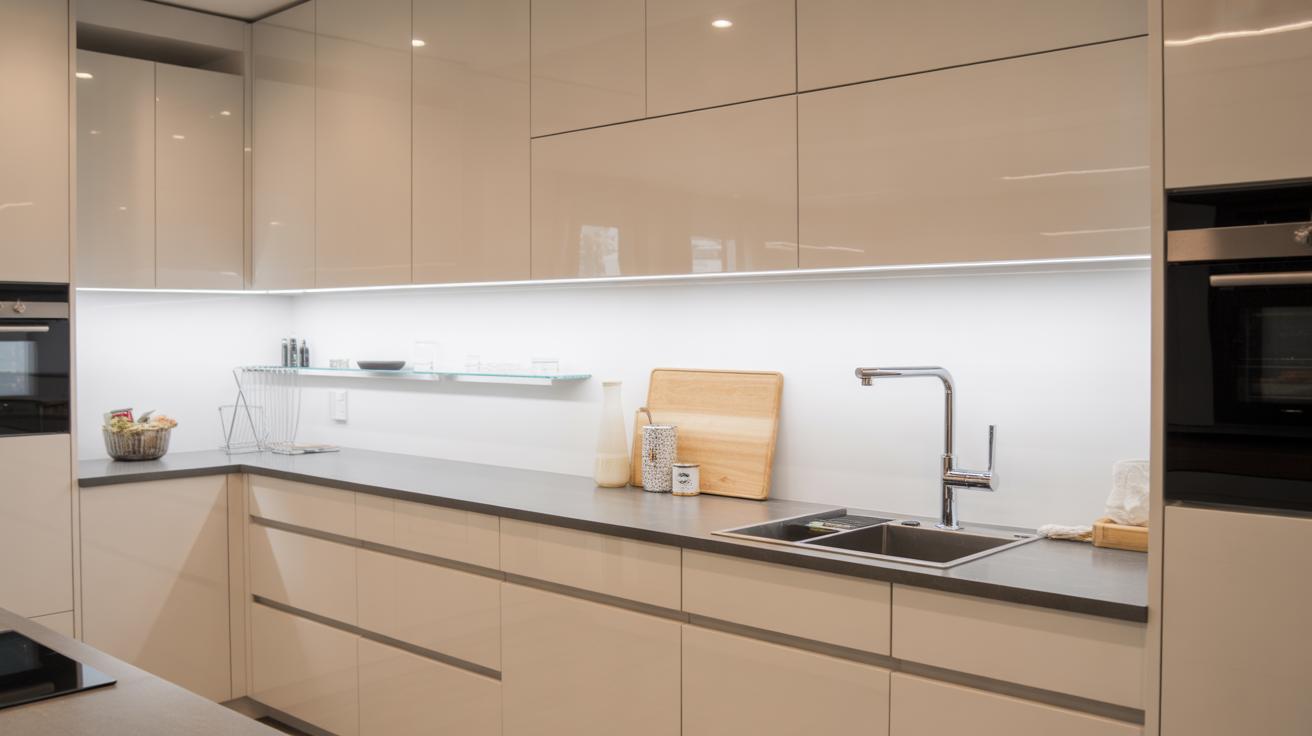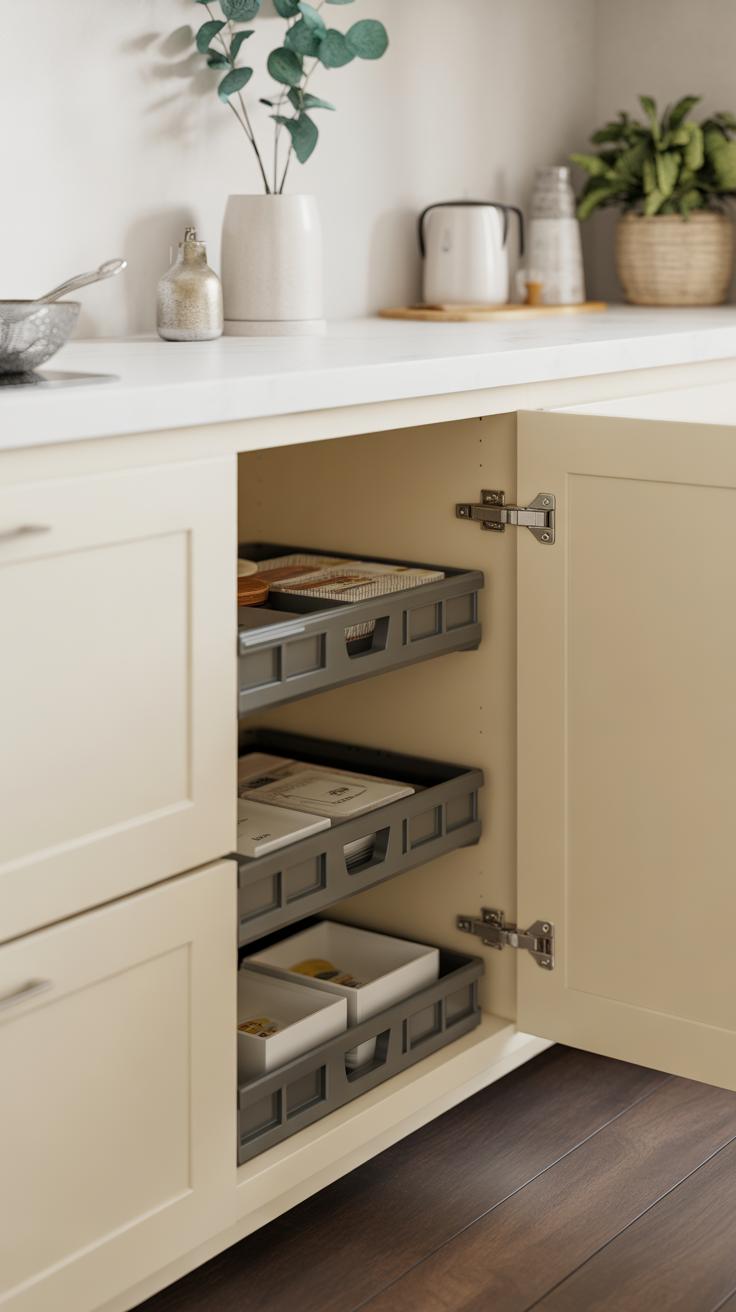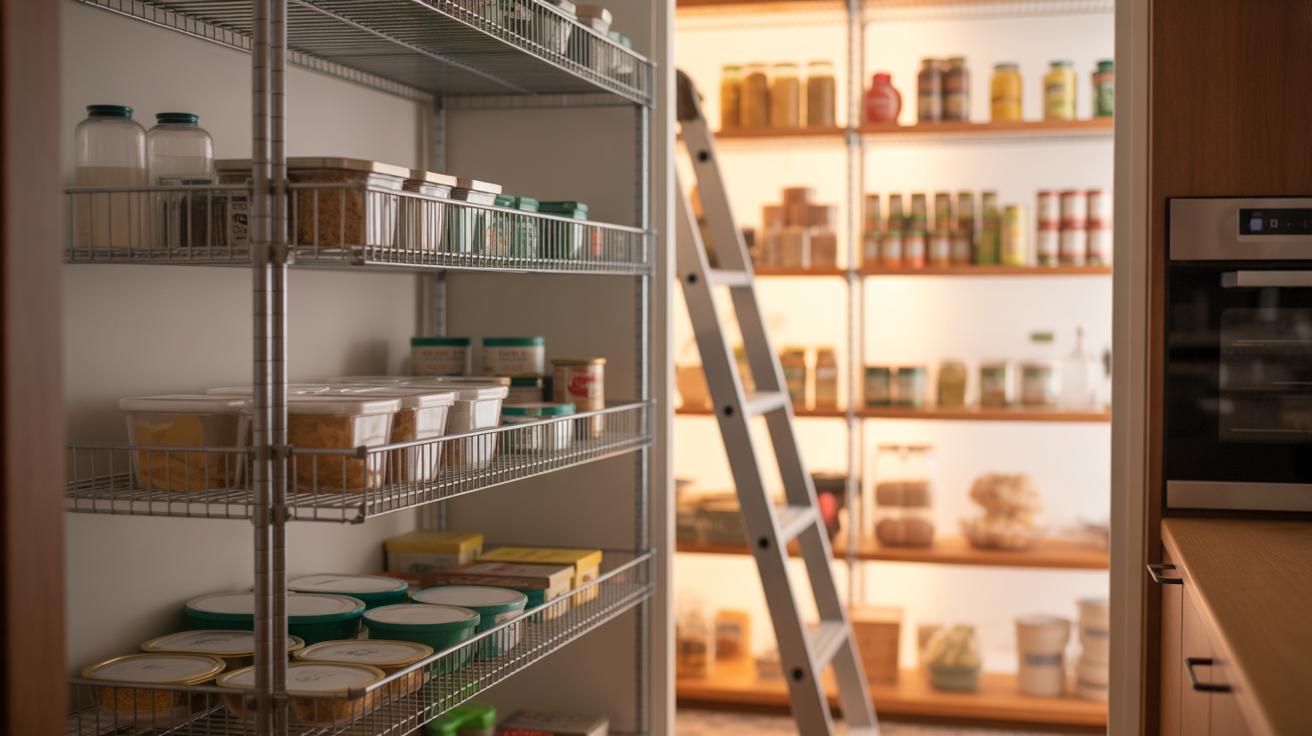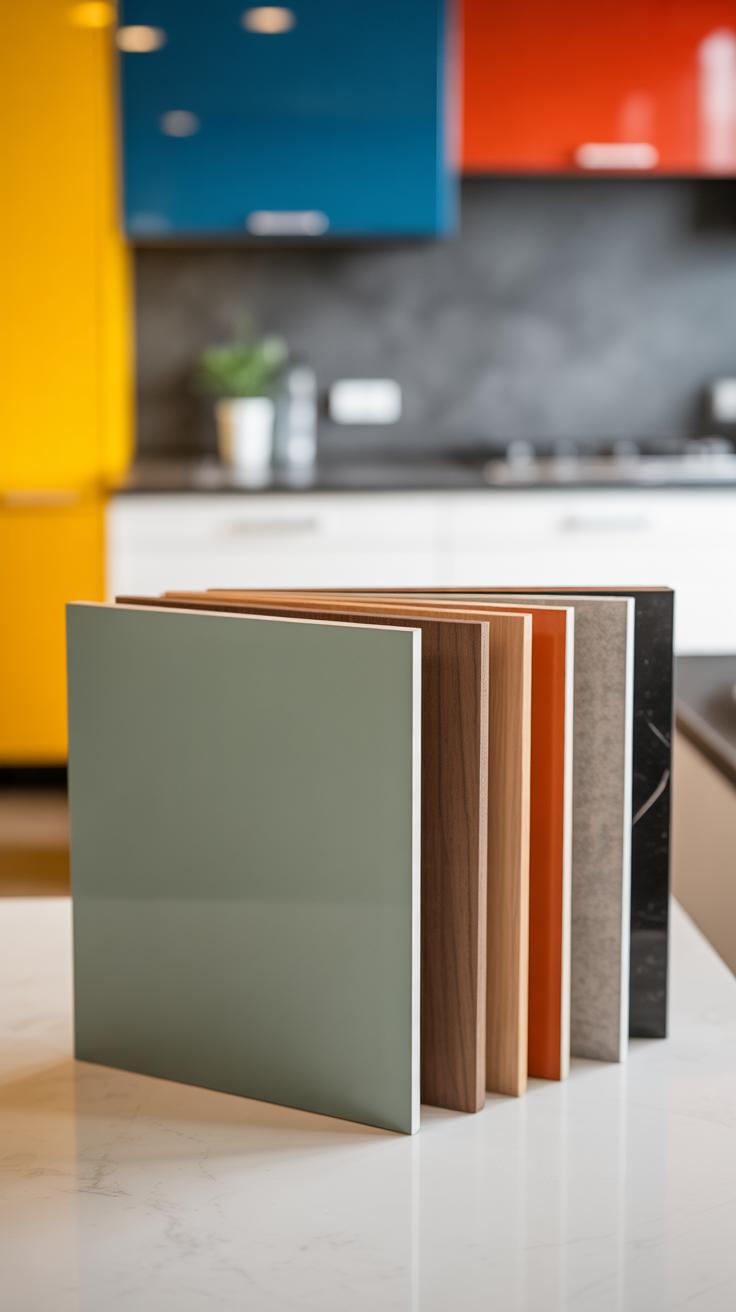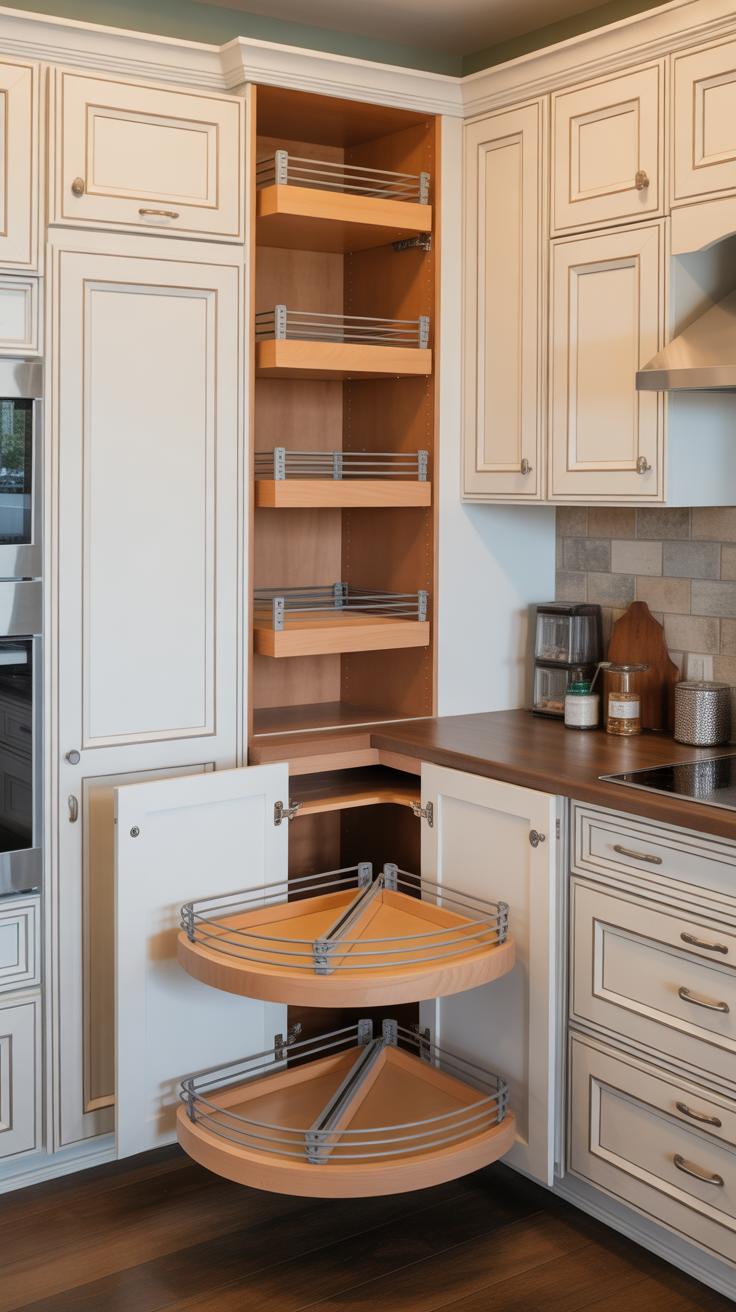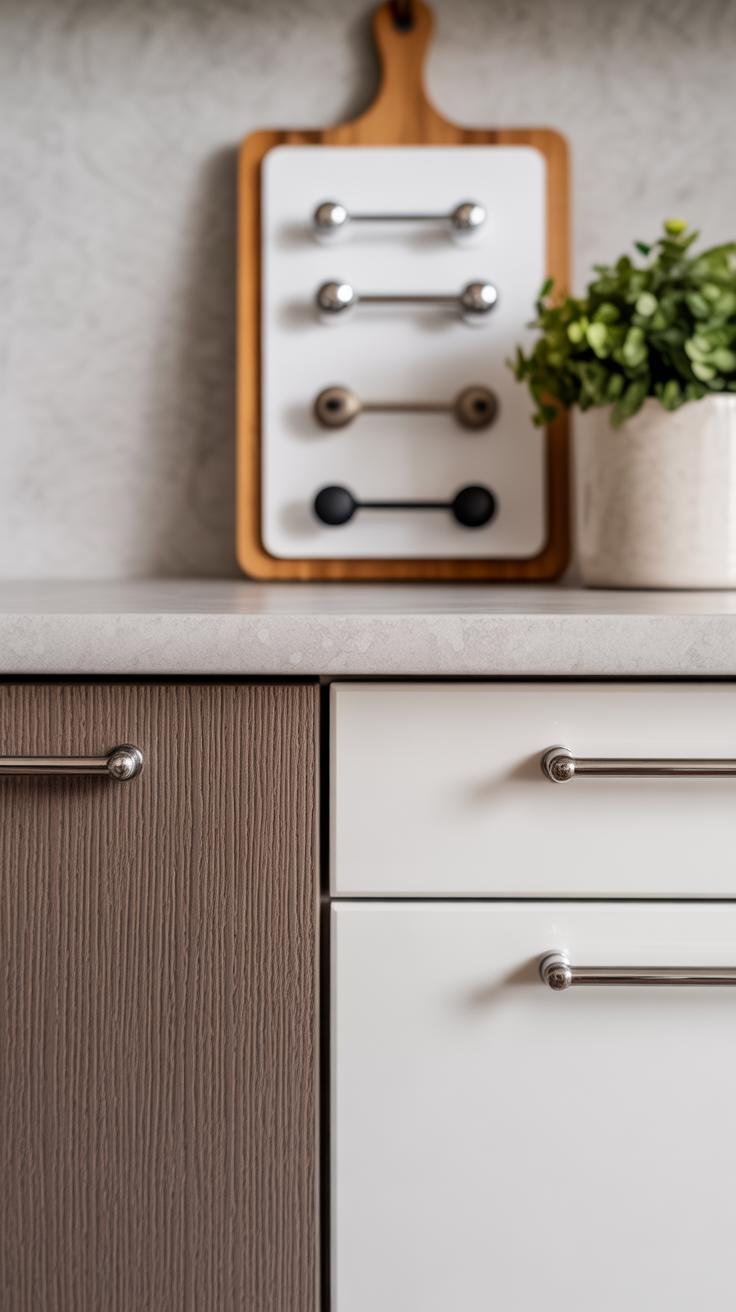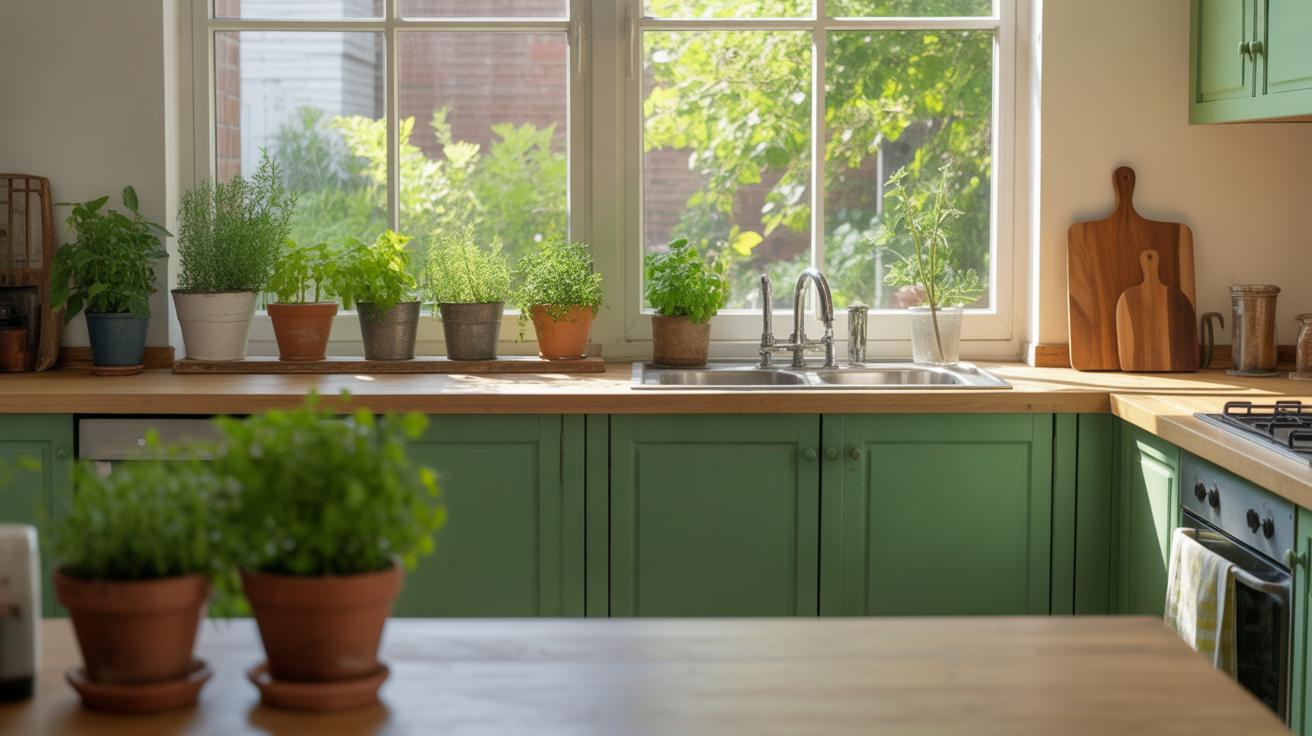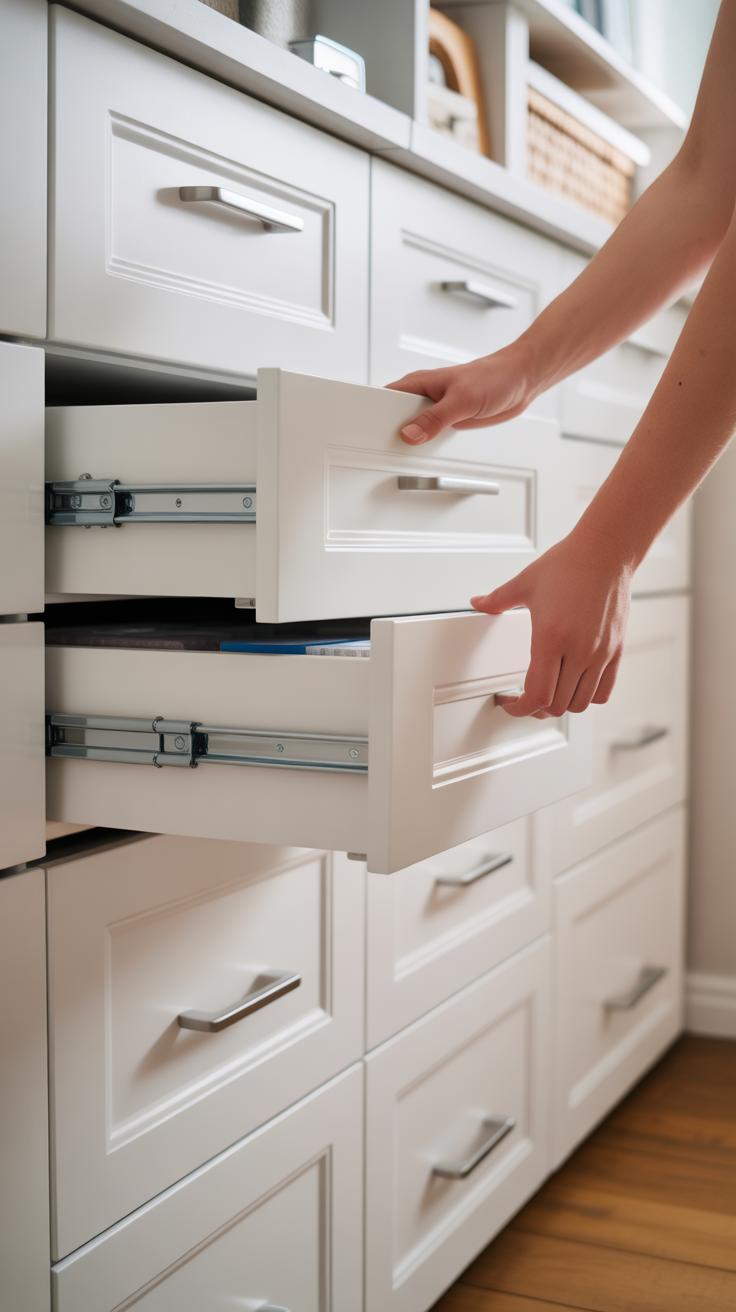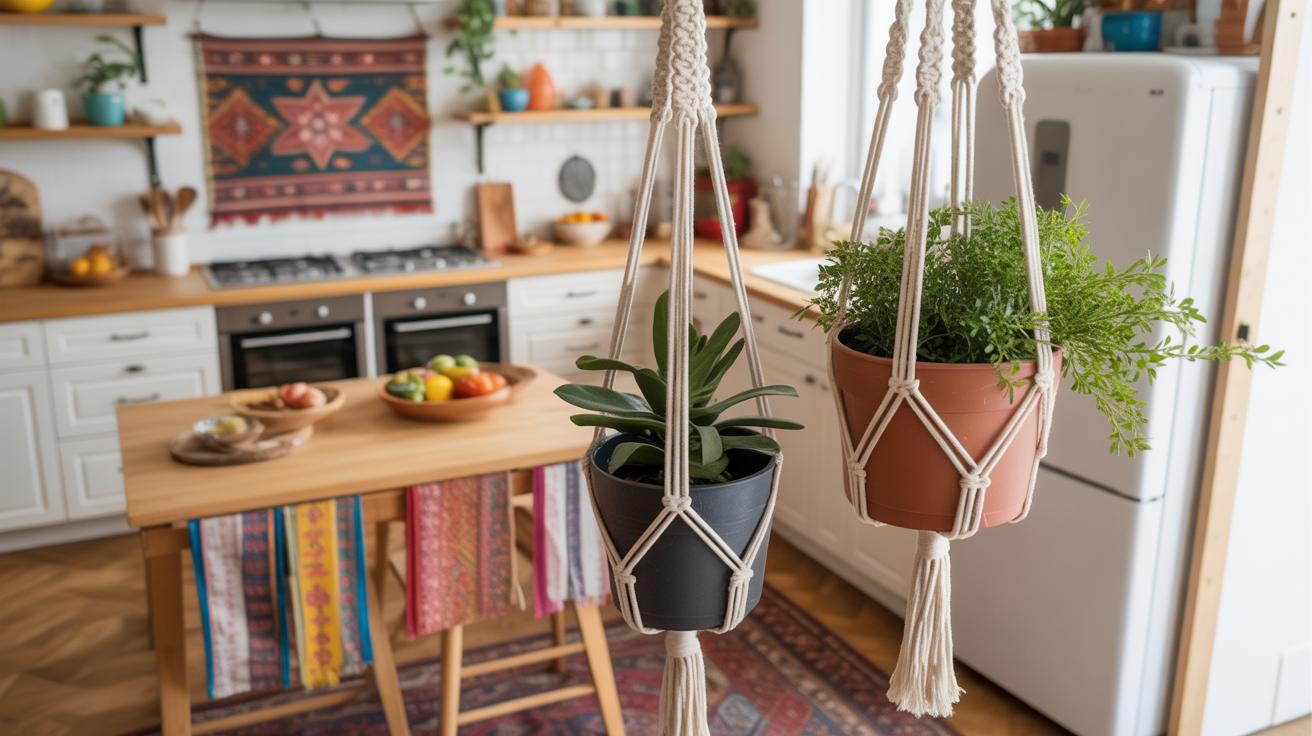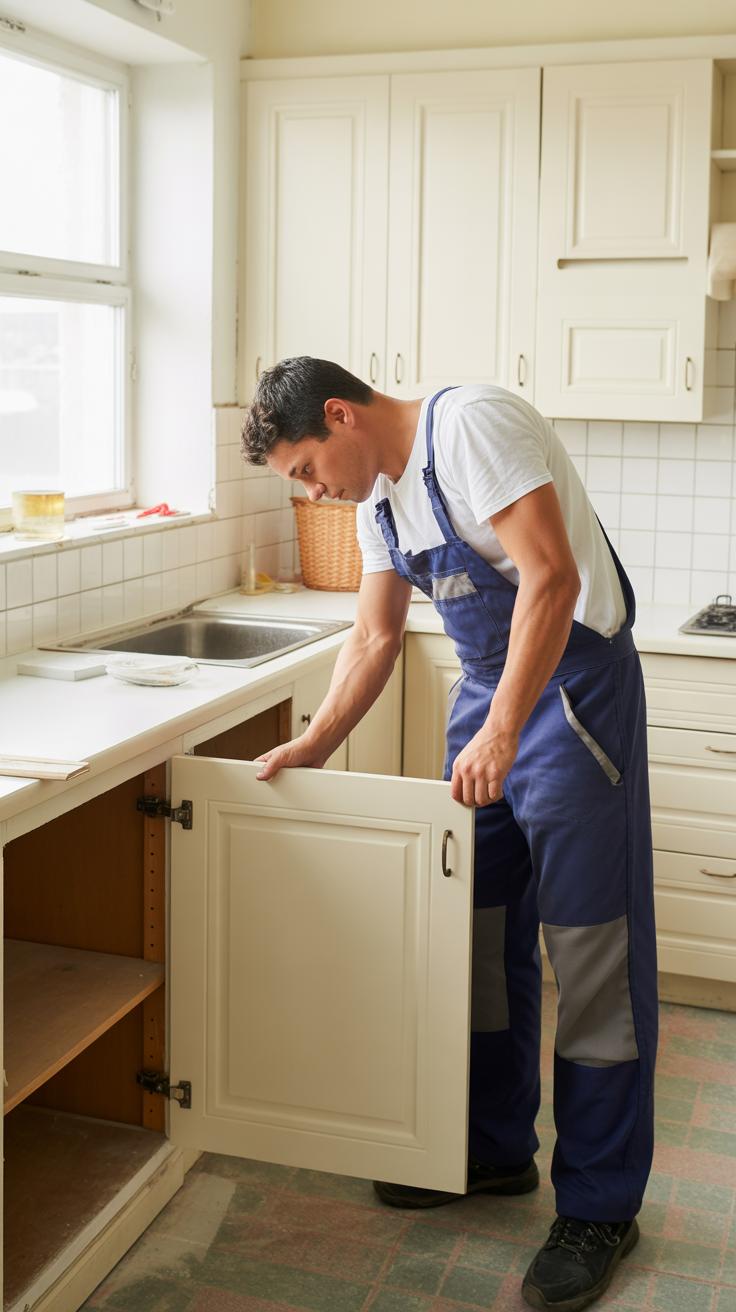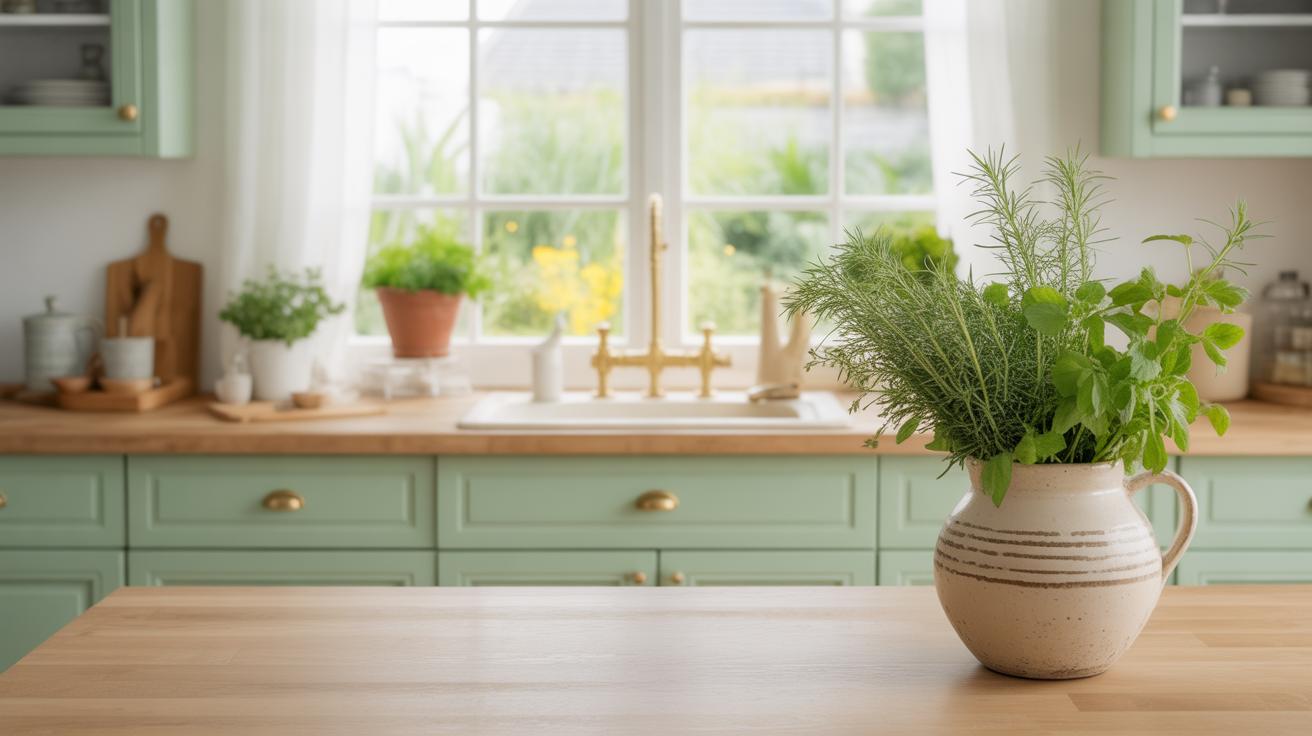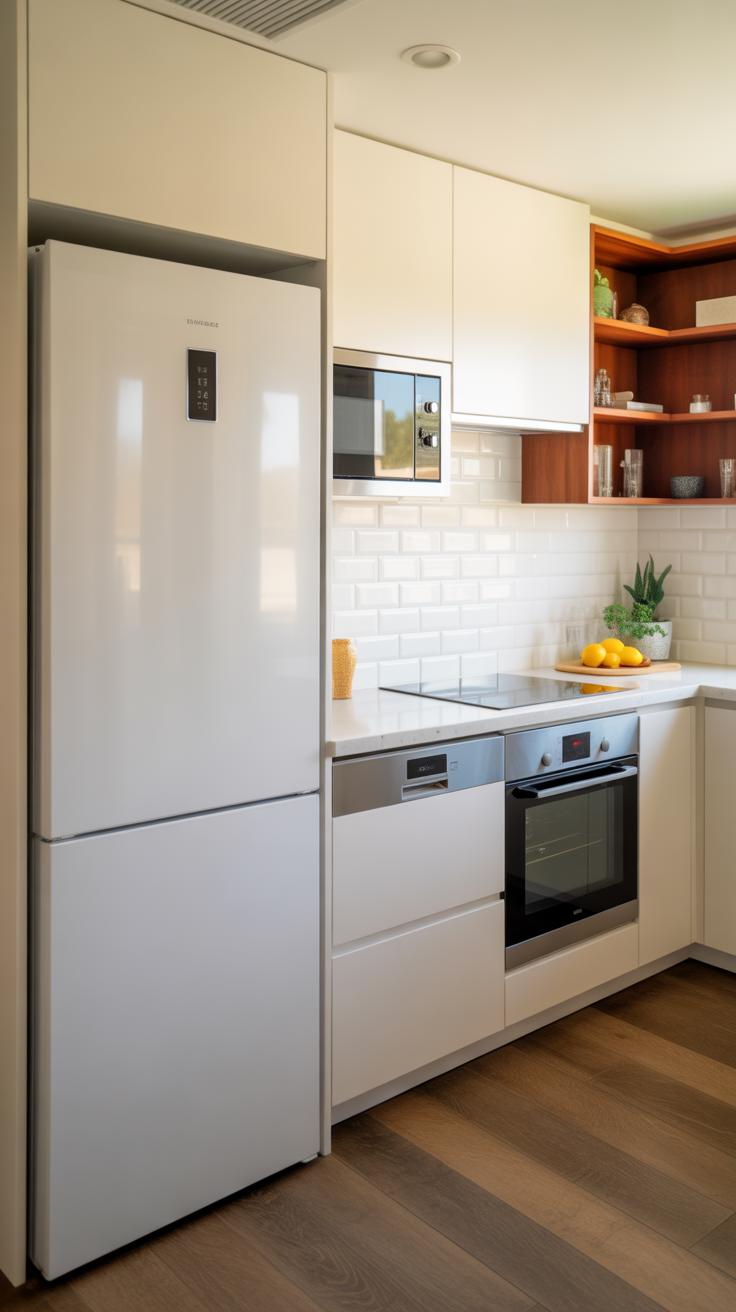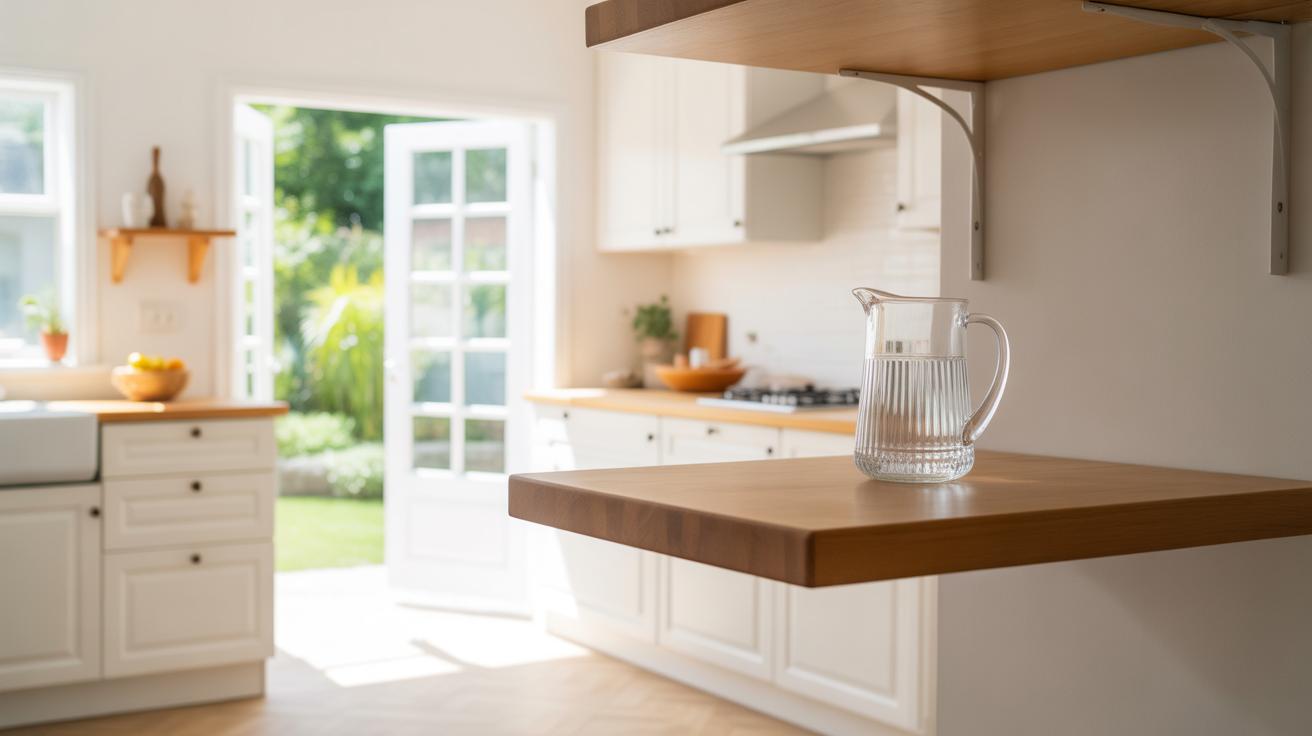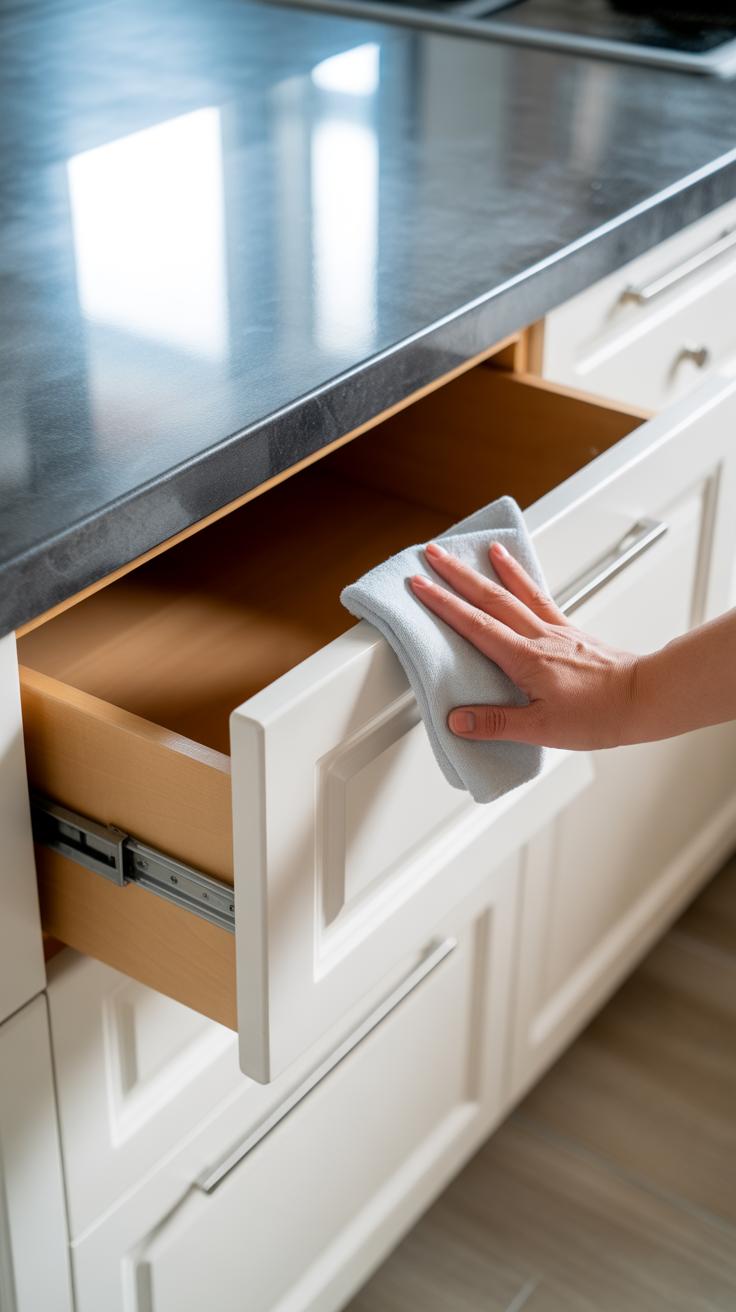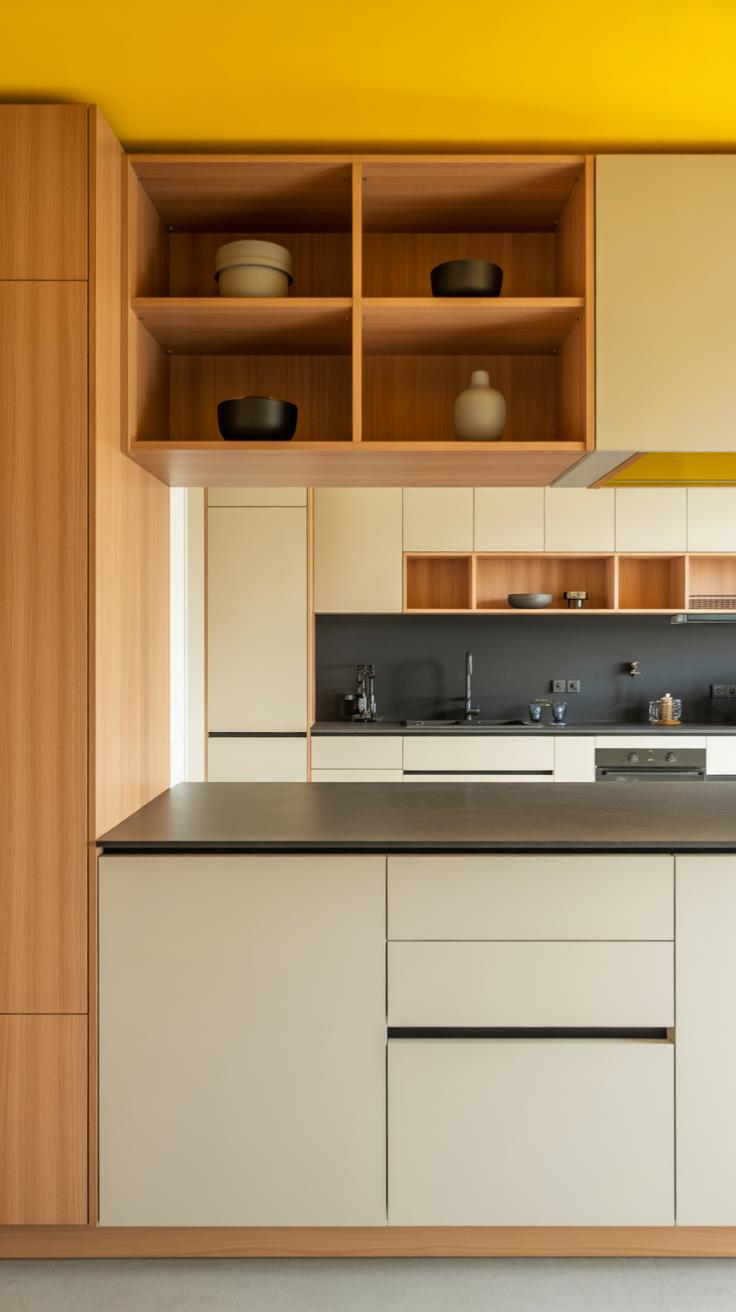Introduction
Modern kitchen cabinets can change how you use your cooking space. They help keep everything organized and easy to find. With more kitchens having many drawers and doors, choosing the right cabinets makes cooking less stressful and faster.
This guide explores ideas for modern kitchen cabinets. You will learn about materials that work, smart storage tricks, and designs that fit your home. These ideas focus on making your kitchen neat and pleasant without losing style or function.
Benefits of Modern Kitchen Cabinets
How cabinets improve kitchen organization
Modern kitchen cabinets do more than just hold your stuff—they actually change how you interact with your kitchen. Think about the last time you struggled to find a pan or a spice jar. Modern cabinets, with their clever compartments and pull-out trays, put those items right where you need them. Many designs include adjustable shelves or built-in dividers that keep utensils, pots, and ingredients from turning into a cluttered mess. You might start appreciating your kitchen more simply because reaching for things no longer feels like a hunt.
It’s not just about hiding clutter behind doors. Open shelving and glass fronts in some modern setups make essentials visible, encouraging you to keep things tidy. Plus, designated spots reduce the tendency to just shove stuff anywhere—so you can decide on homes for every gadget or ingredient. It’s a little thing that makes morning coffee or dinner prep slightly less chaotic.
Enhancing cooking space efficiency
Modern cabinets often mean better use of your kitchen’s footprint. They squeeze storage into corners, or use vertical space with tall cabinets that wouldn’t have seemed practical before. You might find pull-out pantries or hidden drawers that flip out so smoothly, you barely notice the extra storage they provide.
Imagine getting dinner on the table faster because you don’t have to move around so much or open countless cabinets. Some modern styles place frequently used items exactly where you need them, like cutting boards right next to prep zones or spices next to the stove. This setup can reduce steps and interruptions, though I guess not everyone will appreciate that level of order—it might feel a bit too planned for some.
With modern cabinetry, kitchens often feel more spacious, even if the rooms aren’t physically bigger. That’s because clutter is tucked away, and surfaces remain clear. So, while the cooking itself isn’t magically faster, the flow tends to improve just from how things are stored and accessed.
Popular Materials for Kitchen Cabinets
Types of Wood Used in Cabinets
Wood remains a favorite choice for kitchen cabinets, and for good reasons. Oak is known for its strength and distinctive grain patterns. It ages well but can sometimes feel a bit heavy or traditional if not paired carefully. Maple offers a smoother surface and lighter tone, making it easier to stain or paint. I think maple fits nicely in modern kitchens, though it’s a tad softer and may show dents more easily. Cherry wood carries a rich, warm color that deepens over time, giving a certain character. Its smooth finish works well, but cherry tends to be pricier, which is something to keep in mind if budget is tight.
Using Laminates and Metals in Cabinetry
Laminates offer an affordable alternative to wood while giving you many style options—matte, glossy, textured. They resist stains and are relatively easy to clean, which is a plus if you want something low-key. Yet, laminates aren’t as durable as real wood and might peel or chip over years of kitchen wear and tear. Metal cabinets, often made from stainless steel or aluminum, bring a clean, industrial vibe. They handle moisture, heat, and scratches better than wood, but they can feel cold or less inviting in some kitchens. The cost can go either way depending on the finish and thickness. So, while choosing your cabinet material, consider how much daily use they’ll get and the look you’re after.
Cabinet Designs That Maximize Space
When your kitchen is tight on room, every inch counts. Pull-out shelves and sliding drawers can make a surprising difference. They let you reach items at the back without crouching awkwardly or pulling everything out. I once tried a tiny kitchen remodel and realized quickly that having a drawer that slides out fully is almost a necessity. It’s not just about access; you also get to organize things better by having clearly visible layers of storage.
Corner cabinets often get overlooked, yet they hold potential that’s easy to miss. A lazy Susan or swing-out shelves inside these corners let you use those awkward spaces without creating clutter. It’s tricky, though—sometimes they don’t open wide enough, or it’s hard to fit large items. Still, a bit of planning can turn corners into storage gold.
Vertical storage deserves a shout-out. Shelves that stretch upwards or racks that hold trays and pans save space on counters and in drawers. You could add hooks inside a cabinet door for utensils or stack pans vertically rather than flat. These small adjustments create spots for things that otherwise pile up causing frustration.
Think about what you really need nearby while cooking. Could you live without some bulky items in your main cabinets? Playing around with these ideas might prompt you to rethink your entire storage layout. Perhaps your kitchen could be less crowded than you imagine.
Choosing Cabinet Finishes For Your Style
When it comes to cabinet finishes, the choice can feel a bit overwhelming. Matte and glossy surfaces offer very different looks and require different kinds of care. Matte finishes absorb light, giving cabinets a soft, understated appearance that doesn’t scream for attention. They tend to hide fingerprints and smudges better than glossy ones, which can be a relief if you’re not too keen on constant wiping. Still, matte finishes may catch dust more visibly, so they ask for regular light dusting.
Glossy cabinets, on the other hand, reflect light and can make the kitchen feel brighter and more spacious. They look sleek and modern but show fingerprints and smudges more easily. If you’re someone who prefers a shiny surface and doesn’t mind cleaning often, glossy might work. But if you’re a bit less fastidious, you might find yourself annoyed with the constant shine-polishing.
Natural wood finishes bring warmth and character that painted options sometimes can’t match. The grain and texture add visual interest that changes with light and time, offering a timeless feel. These finishes vary widely—from smooth, light maple to rich, dark walnut—and they usually require sealing to protect against moisture and stains. Wearing these finishes over time adds personality but does mean occasional maintenance, like refinishing or oiling.
If paint is more your style, popular colors tend to lean toward muted tones—soft greys, navy blues, and even black for drama. White and cream remain classic, blending well with multiple kitchen styles. Painted cabinets give you more color flexibility but might chip or show wear sooner than wood veneers, which is something to keep in mind if you cook frequently or have a busy household.
Installing Task Lighting In Cabinets
Lighting inside or beneath your kitchen cabinets can make a surprising difference in how you cook and organize. When you’re chopping vegetables or trying to find that rarely used spice jar, a well-lit surface feels much more inviting and practical. It’s easy to underestimate how shadows created by overhead lights can hide what’s right in front of you.
Under-cabinet lighting benefits
Under-cabinet lights bring direct illumination to your countertops, brightening work areas where natural light might not reach. They cut down on eye strain while preparing meals, and honestly, they can create a cozy, focused mood for late-night cooking sessions that harsh ceiling lights don’t offer.
Installing LED strips or puck lights under cabinets also highlights your backsplash and countertops, adding subtle depth to the room without overwhelming it. You get practical lighting without sacrificing style, which, in my experience, is a rare combination.
Lighting options inside cabinets
Inside cabinets, small LED lights—either motion-activated or with manual switches—can help you find what you need fast. These lights are great for deep or tall cabinets where things tend to get lost in the dark. You might go for strip lights along the cabinet tops or small puck lights at key points. Some lighting solutions come with adjustable brightness, which lets you balance visibility with a soft glow.
Besides convenience, these lights can highlight your dishes and glassware, almost like a display. It turns everyday storage into something a bit more intentional. Does your kitchen need this? Maybe not. But once you try it, it feels hard to go back.
SoftClose And EasyAccess Hardware
Soft-close doors and drawers have become common in modern kitchen cabinets, but they’re more than just a convenience. These mechanisms slow down the closing action, preventing doors and drawers from slamming shut. The quiet, gentle close doesn’t just reduce noise; it protects your cabinets from wear and tear over time. You might not notice it immediately, but over months and years, this feature can save you from expensive repairs or replacements.
Think about how many times you’ve left a drawer slightly ajar or slammed a cabinet door out of habit. Soft-close hardware changes that experience without demanding a conscious effort. It’s almost like the cabinets care for themselves.
On the other hand, easy-access hardware brings a new level of organization inside your cabinets. Items hidden in the back can be a real frustration. Pull-out spice racks, for example, allow you to see and reach what you need without rummaging or stacking. Vertical dividers help keep baking sheets, cutting boards, and trays neatly arranged and upright; no more awkwardly digging around or risking tipping piles.
Sometimes, these solutions feel like small luxuries, but they gradually make cooking and cleaning feel less like chores. Does your kitchen have some hardware features that surprise you every time you use them? If not, maybe it’s time to consider these simple updates for smoother, quieter, and more accessible cabinets.
Refacing Existing Cabinets For A Fresh Look
What is cabinet refacing?
Cabinet refacing is a way to update your kitchen by changing the outer surfaces of your existing cabinets. Instead of tearing everything out and building new cabinets, you replace the doors, drawer fronts, and cover the cabinet boxes with a new veneer or laminate. Sometimes, the hardware gets swapped out, too. It’s like giving your cabinets a facelift without the full surgery.
This approach works best when your cabinet boxes are still solid but the style or finish feels dated. If your cabinets are structurally sound, refacing can be surprisingly effective. You get a fresh look, but you avoid the mess and hassle of a full remodel.
Benefits over full cabinet replacement
Choosing to reface instead of replacing cabinets can save you both money and time. Here’s what I noticed when helping a friend with this:
- Lower costs: Refacing often runs about half the price of a full replacement since you’re not buying entire new cabinetry.
- Less disruption: The work usually takes a few days, not weeks, keeping your kitchen usable much sooner.
- Less waste: You’re recycling parts of your old cabinets, which feels like a better choice for the environment.
- Style flexibility: New doors and veneers come in many finishes and materials—it’s easier to switch up the style without huge commitments.
- Retained layout: If you like your kitchen’s design but not the look, refacing updates appearance without rearranging everything.
Of course, this isn’t perfect for every kitchen. If your cabinets are rotted or damaged, refacing won’t fix the core problems. Still, I think it’s a smart way to refresh your kitchen—especially if you want a new look without dealing with a full remodel’s chaos and cost.
Integrating Appliances With Cabinets
Blending your appliances with cabinets often makes the kitchen feel more orderly, but it’s not always straightforward. Built-in appliances are quite popular for this reason. They can be tucked behind panels that match your cabinet fronts, so, for example, your dishwasher doesn’t stand out as a separate unit but feels like part of the cabinetry.
Common built-in designs include fully integrated refrigerators that have cabinet doors attached to them, and dishwashers with customizable front panels. You might find microwave drawers or ovens fitted flush within the cabinet rows. These setups hide the appliance edges and controls, creating a uniform surface—though sometimes the installation can be tricky or expensive.
When it comes to matching finishes, you could go one of two ways. Either you pick cabinet finishes that complement the color and texture of your appliances or choose panels precisely matching them, especially if your appliances have distinctive steel or black finishes. I’ve seen kitchens where matte black cabinets soften the look of black stainless steel appliances, offering a cohesive feel without trying too hard.
Think about whether your appliances should stand out or blend in. If you want a minimalist look, matching finishes help. But if you prefer contrast, then slightly different tones or materials might actually sharpen your kitchen’s character. What’s your comfort level here? Does your appliance become just furniture, or a feature you want to highlight?
Maintaining Your Modern Kitchen Cabinets
Keeping your modern kitchen cabinets looking sharp over time isn’t as tricky as you might think. Simple daily habits make a big difference. Wiping cabinets with a soft, damp cloth right after cooking can stop grease and grime from settling in. You don’t need fancy cleaners—just mild soap and water usually do the trick. But don’t let moisture sit too long; wood and laminate can warp or stain if left wet.
Once a week, a more thorough clean can help maintain the finish. Take time to gently scrub handles and hinges, where dirt tends to hide. It’s easy to forget these spots, but they show wear the fastest.
Daily and Weekly Cleaning Routines
Try to:
- Use a microfiber cloth for dusting—less scratching on delicate surfaces.
- Clean spills immediately, especially acidic juices like lemon or tomato.
- Avoid harsh abrasives or scouring pads that can dull or scratch finishes.
- Check hardware regularly and tighten loose screws to prevent damage.
Handling Scratches and Wear
Scuffs and scratches happen—don’t fuss over every nick. For minor marks, a touch-up marker that matches your cabinet’s color can help. Sometimes rubbing a walnut over small scratches can even disguise them surprisingly well. If a door’s finish starts to wear unevenly, consider light sanding and reapplying a clear coat rather than replacing the whole piece.
What about stubborn damage? You might need professional help, but small fixes done early prolong your cabinets’ life significantly. It’s a bit like caring for shoes: consistent, small actions add up. Would you rather ignore a scratch until it spreads? Probably not.
Trends In Modern Kitchen Cabinet Design
Modern kitchen cabinets are shifting towards simplicity, but not just for looks. Minimalism means fewer details and clean lines, creating a calm, uncluttered space. Frameless cabinets fit right into this trend by getting rid of bulky frames around doors and drawers. They provide a smooth, almost built-in appearance that’s easy on the eyes. I’ve noticed these cabinets also allow for more storage inside since the absence of a frame adds a bit more room. Plus, their flat surfaces make cleaning quicker—something anyone who cooks knows is a bonus.
Color choices have evolved too. While whites and neutrals still dominate, subtle shades like muted greens or deep blues are making their way into modern kitchens. They add personality without overwhelming the space. It’s interesting how these colors come in matte finishes that both hide fingerprints and keep the calm aesthetic. You might wonder why you’d want a darker tone in the kitchen—it can feel cozy, but it also demands a bit more upkeep.
Now, sustainable materials are more than just a buzzword. Eco-friendly cabinets often use reclaimed wood, bamboo, or low-VOC finishes. These options reduce environmental impact, something many home cooks care about—me included. Choosing sustainable cabinets feels like a small but meaningful step toward a greener lifestyle. On a practical note, these materials sometimes age better and develop character, though they may also need a little more care. It’s a trade-off, but one worth thinking through if sustainability matters to you.
Conclusions
Using modern kitchen cabinet ideas can create a neat, organized, and stylish space. Selecting proper materials and clever storage solutions lets you enjoy cooking while keeping your kitchen tidy. Small changes in cabinet design can save time and reduce clutter.
Take what fits your kitchen and lifestyle best. Modern cabinets are not just about looks. They improve how you use your kitchen every day. Your cooking space can be both practical and welcoming with the right cabinet choices.

